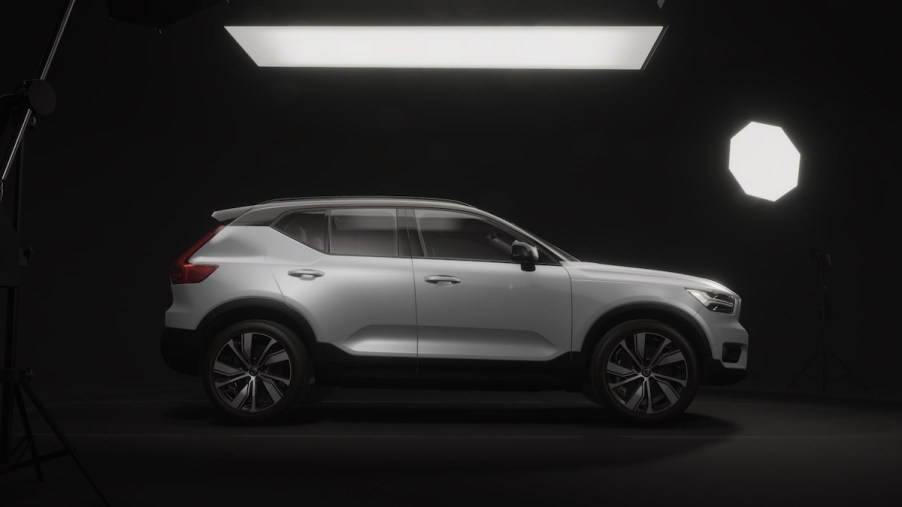
6 Benefits of Buying a 2022 Volvo XC40 Recharge Over an Audi e-tron
Competing in a crowded EV segment, the 2022 Volvo XC40 Recharge might be easy to overlook. However, the XC40 Recharge is a good electric SUV that stacks up well against competitors, including the 2022 Audi e-tron. In fact, here are six reasons why EV shoppers should consider the 2022 Volvo XC40 Recharge over the e-tron.
1. The 2022 Volvo XC40 Recharge is priced below the Audi e-tron

Though both are luxury electric SUVs from European automakers, there is a large price gap between the two EVs. According to Edmunds, the standard 2022 Audi e-tron starts at $66,000, while the standard Volvo XC40 Recharge starts at $52,000. That’s a $14,000 price difference. The gap gets even wider between higher trims.
The e-tron’s second trim level is the Premium Plus, starting at $75,000. One trim level higher in the XC40 Recharge lineup is the Plus, starting at $55,000. The e-tron’s top trim is the Chronos, starting at over $83,000. And the XC40 Recharge’s range-topping model is the Ultimate, with an $58,000 starting price. That means the top-tier e-tron costs $25,000 more than the highest-level XC40 Recharge.
2. The 2022 Volvo XC40 Recharge takes less time to recharge than the 2022 Audi e-tron
Both EVs, no matter the trim, use a 240-volt charger. The Audi has a 95-kWh battery, while the Volvo has a 78-kWh battery. This gap in battery size means it’ll take the Audi longer to recharge. The XC40 Recharge needs only eight hours to recharge, while the Audi requires 10 hours.
3. The XC40 Recharge has slightly better standard driving range despite its smaller battery
Despite the fact that the e-tron has a 17-kWh battery-size advantage, the XC40 Recharge actually offers slightly better range. The e-tron gets only 222 miles on a full charge, while the XC40 Recharge can go up to 223 miles.
4. The Volvo is more fuel-efficient than the Audi
The reason for that range similarity comes down to their differences in EV fuel economy. The 2022 Volvo XC40 Recharge gets 85 MPGe combined, according to Edmunds, while the e-tron gets only 78 MPGe combined.
Another way to look at their efficiency is with the kWh-per-100-mile number. The e-tron needs 43 kWh to travel 100 miles, but the XC40 Recharge needs only 39 kWh to travel 100 miles.
5. The 2022 Volvo XC40 Recharge weighs less
An EV’s batteries are responsible for a lot of the vehicle’s weight, and because the e-tron has huge batteries, it also weighs more than the XC40 Recharge. The e-tron has a curb weight of 5,765 pounds, compared to the XC40 Recharge’s 4,662 pounds. That’s a weight difference of over 1,100 pounds, and it helps explain why the Volvo is the more efficient model.
6. The 2022 XC40 Recharge has more overall cargo space than the 2022 Audi e-tron
Despite the lighter weight, the 2022 XC40 Recharge actually has a higher max cargo capacity. The 2022 e-tron provides 28.5 cubic feet of cargo space behind the rear seats, which is more than the 25 cubic feet the XC40 Recharge offers in its rear cargo area. However, with the seats are folded down in both models, the XC40 Recharge provodes 57.5 cubic feet, over a cubic foot more than the e-tron’s 56.4 cubic feet.


